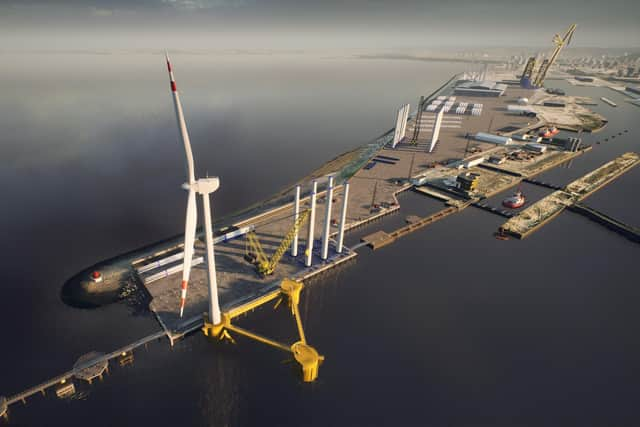What is a green freeport? Are they good for the environment and what about workers' rights?
and live on Freeview channel 276
Prime Minister Rishi Sunak has announced two new ‘green freeports’ for Scotland – one in Edinburgh. The Firth of Forth bid – focusing on Leith and Edinburgh Airport – has been confirmed, with hopes to create up to 50,000 jobs. But what actually are ‘green freeports’? Here’s what we know.
What are freeports?
In the UK, freeports are areas designated by the UK government as special economic zones where normal customs rules and taxes do not apply. The idea is to attract investment and encourage economic activity, increasing manufacturing and generating new jobs. Critics claim they often just mean existing companies relocating to benefit from tax breaks. And they say the zones are open to money laundering and organised crime.


Are there freeports already in operation?
Advertisement
Hide AdAdvertisement
Hide AdAs Chancellor, Rishi Sunak announced in 2021 there would be eight freeports. They are all in England – at East Midlands Airport; Felixstowe and Harwich; Humber region; Liverpool City Region; Plymouth Solent; Thames; and Teesside. It was decided there would be two (green) freeports in Scotland – now we know they will be the Firth of Forth and the Cromarty Firth and Inverness.
Have green freeports been tried before?
Margaret Thatcher proposed to establish “experimental” freeports in the 1983 Conservative election manifesto and went on to grant freeport status to six areas – Belfast, Birmingham, Cardiff, Liverpool, Glasgow Prestwick Airport and Southampton. They were judged to have limited success and by 2012 prime minister David Cameron decided not to renew the freeport licences.
What's different about green freeports?
The Scottish Government was unwilling to sign up to the freeport model used by the UK and proposed an alternative version it called greenports – requiring companies to commit to pay the Living Wage and comply with net-zero targets. However, the UK government would not agree to all the greenport conditions and eventually a compromise was reached, to be known as green freeports, which both governments were satisfied incorporated the bulk of what they wanted.
Will the Forth green freeport be good for the environment?
Green freeports are meant to help deliver a “just transition” to net zero by 2045. Liz McAreavey of Edinburgh Chamber of Commerce has pointed out the area around the Forth generates 40 per cent of Scotland's industrial emissions and handles half of the nation's economic output. She argued a green freeport programme without the Forth at its heart would substantially limit Scotland's economic potential. And the renewable energy sector is the key focus for much of the development proposed in the plans.
What are the concerns about green freeports?
Advertisement
Hide AdAdvertisement
Hide AdOpponents of freeports say they do not create economic growth, but merely lead to displacement of economic activity, with firms switching from their current location into the zone to benefit from the tax breaks. They also warn they are vulnerable to money laundering and organised crime. Unions fear, despite the Scottish Government claims, there are not enough protections for workers’ rights and wages. And green campaigners – including the SNP’s Green partners in government – have called the green freeport scheme “greenwashing”.